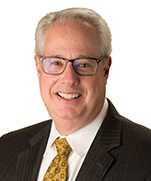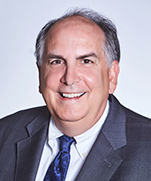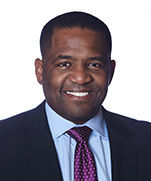On March 13, President Donald Trump declared a national emergency due to the rapidly spreading coronavirus. Since that time the virus has exploded in the United States leading to four federal relief bills and a litany of executive orders on the state level. Georgia, home to over 22,000 cases, is beginning to open businesses pursuant to health and safety regulations laid out by Governor Kemp.
A Partial Summary of the State Executive Orders
Several State Executive Orders concerning COVID-19 have been executed by Governor Kemp since March 14.
March 14th
The first executive order declared a Public Health Emergency, with the General Assembly concurring on March 16. Pursuant to that order broad powers were given the Governor per O.C.G.A. Sec. 38-3-51. The Governor used those powers to specifically direct the Georgia Department of Public Health and the Georgia Emergency Management Agency to fully activate their operations to address the emergency. Among other things, temporary health care licenses were authorized as well as other issues pertaining to infrastructure. The second Executive Order authorized National Guard troops to aid in the preparation, response and recovery to this pandemic.
March 16th
The Governor closed elementary, secondary and post-secondary schools effective March 18. This action was extended twice through the remainder of this academic year.
March 20th and 23rd
The Department of Community Health and other health care licensing Boards were granted additional emergency authority. The March 23 Order directed that the Department of Public Health mandate that persons with serious underlying health conditions “shelter in place.” Bars were ordered closed and businesses could not allow more than ten persons to be gathered in a single location with everyone 6’ apart. DPH was authorized to close non-compliant businesses and the State Patrol was authorized to assist in the enforcement of the Order.
April 2nd
All residents and visitors were required to “shelter in place,” unless they conducted or participated in “Essential Services,” the minimum basic operations of a business, performed necessary travel e.g. grocery shopping and doctor visits, or were a part of the workforce for “Critical Infrastructure.” All businesses, essential and non-essential, were directed to screen and evaluate workers who exhibited signs of illness and enhance sanitation practices, as well as provide alternative points of sale e.g. curb pick-up. Dine-in restaurant service was discontinued as well as gyms and the like. The Governor also suspended any existing or future local government restrictive Orders.
April 3rd
Sheriffs were similarly authorized to enforce the prior Orders.
April 8th
The Public Health State of Emergency was extended through May 13.
April 14th
The Governor proclaimed that employees, staff and contractors of healthcare institutions and facilities were considered auxiliary emergency management workers per O.C.G.A. Sec. 38-3-35, thus enhancing liability protection to those individuals and entities.
April 20th
The Governor authorized “elective” healthcare procedures to commence operation, as well as permitting gyms, hair salons and the like to open Friday, April 24 as long as they follow strict guidelines. The ten-person, 6’ apart guidelines remain. DPH entered into an agreement with Augusta University Health System to provide screening and testing services. EMT providers and the like were similarly afforded auxiliary health status too.
The April 23 Executive Order
Governor Kemp has issued new guidelines for the gradual opening of businesses. As it relates to the public, social distancing is still mandated with individuals strongly encouraged to wear face coverings while outside their home. No businesses shall allow gatherings of persons. “Shelter in place” remains for all individuals at higher risk of severe illness, to include those persons who are 65 years of age or older, while still permitting grocery shopping etc.
With regard to Restaurants and dining services, effective Monday, April 27, no more than 10 patrons can be in a restaurant per 500 sq. ft. of public space [including waiting and bar areas].
All such restaurants and dining rooms must institute the following measures[1]:
- Screen and evaluate workers who exhibit signs of illness, such as a fever over 100.4 degrees, cough, or shortness of breath;
- Require such workers to not report to work or seek medical attention;
- Implement teleworking for all possible workers;
- Hold all meetings virtually, whenever possible;
- Train all employees on the importance and expectation of increased frequency of handwashing and use of hand sanitizers, avoid touching hands to face;
- Require all employees to wear face coverings at all times, cleaned or replaced daily;
- Increase physical space between workers and patrons;
- Discontinue the use of salad bars and buffets;
- Thoroughly clean and sanitize the entire facility before resuming dine-in services and continue to do so regularly;
- Between diners, clean and sanitize tabletops, commonly touched areas, and discarding single-use items;
- Use rolled silverware and eliminate table presets;
- Remove self-service drink, condiment and the like items;
- Disposable paper menus are strongly encouraged;
- Clean and sanitize restrooms regularly;
- Implement procedures to increase cleaning and sanitizing of surfaces in the back-of-house;
- Update floor plans for dining areas, ensuring at least 6’ of separation from seating to seating;
- Limit party size at tables to no more than 6;
- Where practicable, consider a reservations-only business model;
- Post signage that no one with a fever or other symptoms of COVID-19 is permitted in the facility;
- Provide hand sanitizer for use by patrons;
- Use technological solutions where possible to reduce person-to-person interaction such as mobile ordering and contactless payment options; and,
- Seek to design a process for patron separation while waiting to be seated, going to the restroom, and/or entering or exiting the premises.
Retail food businesses shall:
- Limit the number of patrons inside the store to 50% of fire capacity or 8 patrons per 1,000 sq. ft.
- Encourage patrons to use hand sanitizer upon entering
- Encourage non-cash payments when possible
- Sanitize the doors at least 3 times each day
- Install protective screens or like mitigation measures where worker-patron interactions are likely
- Provide additional hand sanitizer within the business.
Food establishments shall:
- Encourage scheduling specific hours of operation for vulnerable populations to shop without other patrons
- Reduce store hours to increase cleaning and sanitation while the store is closed
- Encourage social distancing such as protective screens at service counters and at cash registers
- Signage and decals on social distancing, and the use of one-way aisles.
- Workers should be given PPE as available and patrons should be encouraged to wear face coverings
- Discontinuing sampling or cooking stations
- Closing self-serve salad bars and buffets
- Restrooms should be checked and cleaned/sanitized regularly
- Allow time for frequent hand washing for employees
- Adding hand sanitizing stations around stores for patrons and employees.
Gyms shall implement additional measures to prevent the spread of COVID-19, to include:
- Signage restricting use by patrons that have been diagnosed with the virus, had symptoms or contact with a person that has or is suspected to have COVID-19
- Enhance sanitation procedures
- Screen patrons at the entrance for fever cough or shortness of breath
- Limiting occupancy to enforce social distancing
- Halting group classes, in-facility child care services
- Closing pools, basketball courts, hot tubs etc. within the facility
- Cleaning and sanitizing bathrooms and locker room regularly
Hair designers, massage therapists and the like shall:
- Provide their services by appointment only
- Require patrons to sanitize their hands upon entering the facility and before any treatment
- Post signs that at the entrance and at each workstation that any patron who has symptoms must reschedule their appointment
- Requiring patrons to wait in their car until their service prover is ready
- Staggering or spacing workstations more than 10’ apart
- Staggering work schedules so that no more than 50% of the normal number of employees providing services will be in the business at a time
- Requiring PPEs as available
- Sanitizing all equipment used by employees and patrons between each visit
- Utilizing disposable materials and supplies as much as practicable
- Training all employees on additional measures.
Indoor movie theatres shall:
- Have each patron at least 6’ apart
- Seats must be thoroughly sanitized before and after each showing
- Assure social distancing
- Party rooms may not host parties or gatherings
- Close any playgrounds or arcade rooms.
Bowling alleys shall:
- Assure similar social distancing and sanitizations
- Allow groups of 6 or less per lane, seated 6’ apart
- Score keeping machines must be thoroughly sanitized before and after each use
- Bowling balls and shoes must be thoroughly sanitized before and after each use.
People working outside without regular contact with other persons shall only be required to practice social distancing and implement sanitation processes.
Dentists and Optometrists must follow their Association guidelines.
Ambulatory Surgical Centers have the similar restrictions to include screening patients before visits and monitoring their health prior to starting surgery, requiring staff to self-monitor and screen for viral symptoms daily, continue to use PPE, follow waiting room spacing guidelines social distancing and face masking. To the extent possible, hospitals, healthcare institutions, medical facilities and nursing homes should offer in-room dining.
Critical Infrastructure can continue in-person operations with implementation of the enhanced measures listed above, e.g. Screening and evaluating workers, enhanced sanitation, disinfecting common surfaces regularly, prohibiting gatherings, implementing teleworking for all possible workers, and suspending the use of Personal Identification Number [PIN] pads, electronic signature capture and the like.
All non-Critical Infrastructure businesses that continue in-person operations shall implement the same types of measures.
All businesses should implement the following measures:
- Provide Personal Protective Equipment as available;
- Provide disinfectant and sanitation products for workers to clean their workspace and equipment; and,
- Increase physical space between worksites to at least 6’.
Public swimming pools, performance venues and amusement rides shall remain closed.
Any law enforcement officer, after providing reasonable notice and issuing at least two citations for violations, is authorized to mandate the closure of such establishment.
The Order is in effect from May 1 until May 13. In the meantime, local governments can make, amend or rescind order related to emergency management as long as they are not inconsistent with the Governor’s Orders or DPH.
Conclusion
The latest Order loosens restrictions for the fitness and food industries but keeps the balance of restrictions in place through May 13. Concerns raised by President Trump, White House Economic Adviser Larry Kudlow and our own Lt. Gov. Geoff Duncan, warrant serious discussion of legislation at the federal and state levels to limit the liability of businesses that follow strict guidelines but still have customers or employees become infected with COVID-19. Such businesses, following the pandemic, certainly don’t have the resources to face an onslaught of such suits. Liability protections may be necessary to re-start our state and national economy.
[1] This is a partial list and does not relate to the operation of dine-in services in hospitals, healthcare facilities, nursing homes or long-term care facilities.






